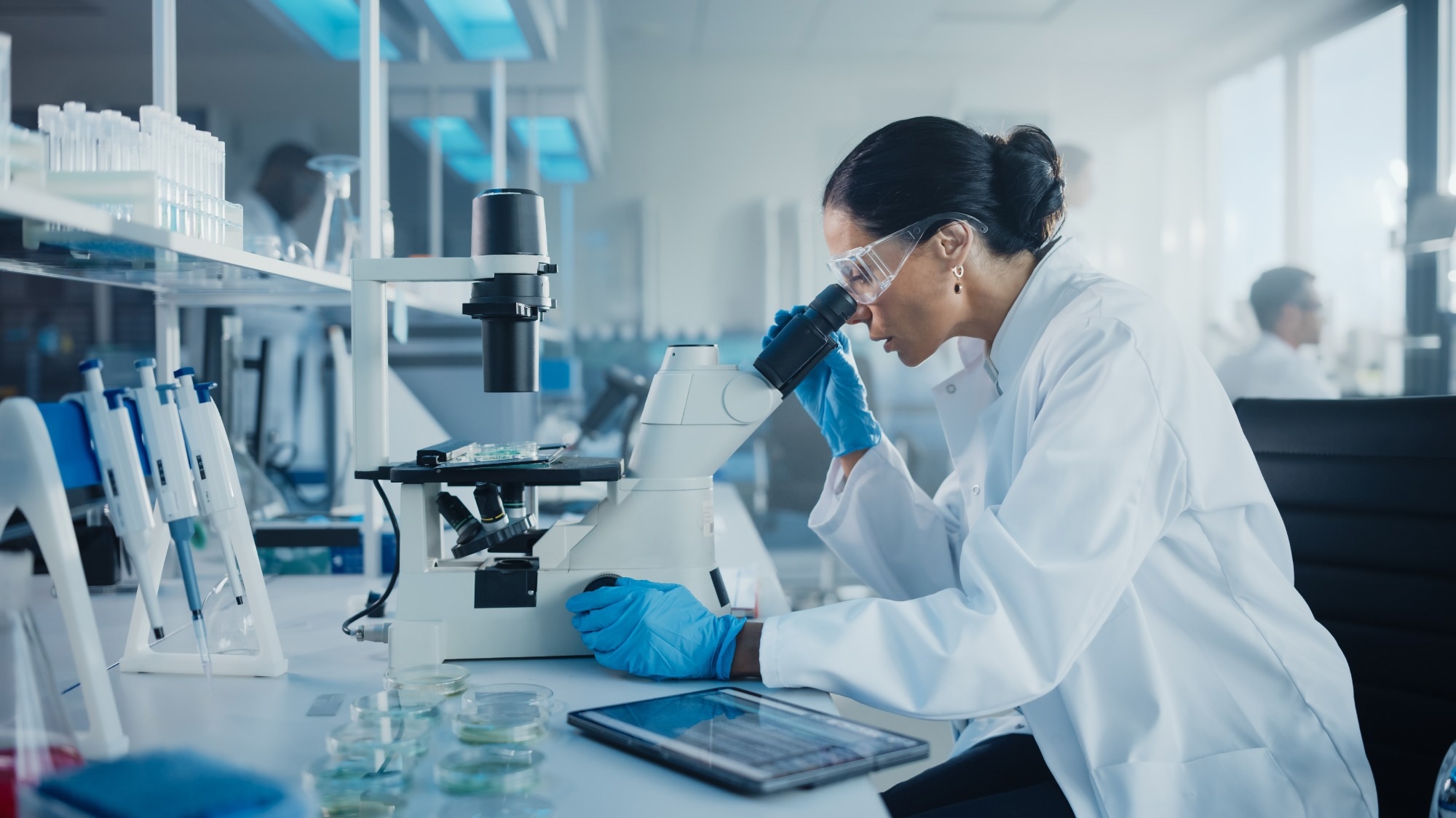In a recent review published in Signal Transduction and Targeted Therapy, researchers presented recombinant adeno-associated virus (rAAV)-based genetic applications to treat human diseases.
 Study: Adeno-associated virus as a delivery vector for gene therapy of human diseases. Image Credit: Gorodenkoff/Shutterstock.com
Study: Adeno-associated virus as a delivery vector for gene therapy of human diseases. Image Credit: Gorodenkoff/Shutterstock.com
Background
Adeno-associated virus (AAV) is a crucial component of clinical gene therapy due to its low pathogenicity and capacity to generate long-term gene expression in various tissues. Recombinant AAV (rAAV) is designed to increase specificity and can cure several illnesses.
However, concerns persist concerning the safety of high-dose viral therapy in people, as well as immune responses and side effects. Researchers prefer AAV vectors due to their broad tissue tropism, high safety profile, and adaptability in manufacturing procedures.
About the review
In the present review, researchers explored AAV-vectored genetic treatment of human disorders.
Recombinant AAV biology, development, and manufacturing
AAV-1, 4, and 7,8 originate from non-human primates (NHP), while AAV-2, 3, 5, 6, and 9 originate from humans. Primary receptors for cellular attachment include N-linked sialic acid, O-linked sialic acid, HSPG, and galactose.
Co-receptors for cellular attachment include fibroblast growth factor receptor 1 (FGFR1), hepatocyte growth factor receptor (HGFR), laminin receptor (LamR), a cluster of differentiation 9 (CD9), tetraspanin, platelet-derived growth factor receptor (PDGFR), and epidermal growth factor receptor (EGFR).
Receptors for post-attachment for AAVs include the adeno-associated virus receptor (AAVR) and G protein-coupled receptor 108 (GPR108).
AAVs localize in the skeletal muscle, central nervous system (CNS), lungs, retina, liver, pancreas, kidney, and heart.
Natural AAV mutants are isolated from non-human primates and humans using high-cycle polymerase chain reaction (PCR) with high-throughput genetic sequencing. Rational design entails altering amino acid molecules in AAV capsids to boost transduction capabilities or elude immune surveillance.
The directed evolution engineering strategy is used to create unique AAV variations with specificity. In silico techniques, known as AAV capsid sequences, they are used to rebuild ancestral sequences of the virus.
Machine learning uses mutagenized AAV-transduced data to predict the link between AAV genome sequences, packing capacities, and site tropism.
Viral infection and transfection platforms are primarily used to manufacture rAAVs. Plasmid temporary transfection of the human embryonic kidney 293 (HEK293) cell lines continues to be the most often used approach; however, stable cellular lines and systems using baculovirus (BV) or herpes simplex virus (HSV) provide scalable options for scalable manufacturing.
TESSA, a transfection-free system of helper viruses, was designed to generate high-yield recombinant AAVs.
All-in-one producer cells that can be induced pharmaceutically might be the best production platform to obtain recombinant AAV-based pharmaceuticals in the future.
Recombinant AAV treatment applications, administration, immunogenicity, and adverse effects
Recombinant AAV gene therapy is effective in treating a wide range of human diseases, including ocular (X-linked retinoschisis pigmentosa, choroideremia, Leber hereditary optic neuropathy), neurological (Alzheimer’s disease, Parkinson’s disease, Huntington’s disease), metabolic (glycogen storage disease, mucopolysaccharidosis, Pompe disease, and Fabry disease), hematological (Hemophilia A, B), neuromuscular (Duchenne muscular dystrophy), cardiovascular (ischemic cardiomyopathy, dilated cardiomyopathy, and congestive heart failure), and gastric cancer.
The ocular immune-privileged condition and tiny volume make it ideal for gene therapy, with various delivery options available. FDA-approved rAAV gene treatments for neurological diseases employ stereotactic, physically limited delivery or extensive CNS transduction by intravenous (IV) administration.
In cellular hematologic circumstances, bone marrow stem cells dilute the rAAV genome, releasing acellular components into the circulation. Recombinant AAV has shown promise in preclinical cancer investigations, but its application to individuals is restricted.
Anti-tumor techniques based on rAAV provide advantages such as regulating or inhibiting gene expression.
Delivery routes determine the performance of rAAV capsids, including intravascular, direct intra-tissue injection, and distribution into pre-existing body cavities or fluid spaces. Each route and capsid is selected based on the ailment, target location, organ system, and patient age.
Intravascular injection enables extensive transduction, although large dosages are necessary. The intra-tissue injection is invasive and confined, whereas intra-cavity administration is distributed in an already established space but may be limited. Intra-fluid delivery has drawbacks, including long vector transit distances.
Recombinant AAV administration, including serotypes, promoters, and enhancers, can cause side effects such as genotoxicity, carcinogenesis, liver damage, thrombotic microangiopathy, and microvascular thrombosis.
Intravenous administration can result in hepatotoxicity, increased liver enzymes, and drug-induced liver damage. Intravenous treatment may result in dorsal root ganglion toxicity, immune cell infiltration, and nerve cell body degeneration.
Edema, inflammation, gliosis, and immunological infiltration are observed on brain magnetic resonance imaging (MRI) scans following intrathecal and intraparenchymal rAAV injections.
The review highlights rAAV-based gene therapy applications for human illnesses. Early success in treating monogenic disorders demonstrated its safety and efficacy.
Challenges include effective delivery, overcoming physical constraints, and understanding rAAV immunogenicity. Strategies for regulating immune responses are critical for patient safety.
Understanding rAAV integration aids in predicting tumor growth, hepatotoxicity, neurotoxicity, and adverse consequences. Further research could assess vector immunogenicity, dosage optimization, and long-term safety.